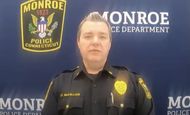The Dateline episode titled Cold Case Spotlight covers a 1977 murder case in Monroe, Connecticut. What should have been a joyful day before summer break turned into a lifelong tragedy when the body of 8-year-old Renee Freer was found in the evening. Even decades later, her killer has never been found.
She was the little girl everyone loved, and it is nearly impossible for investigators to gauge why someone would want to take the life of an 8-year-old. Here are five harrowing details of the 1977 Renee Freer murder case as shown in Dateline.
Here are the 5 harrowing details of 1977's Renee Freer murder case as shown in Dateline
Renee was known for her bubbly, kind-hearted personality. She made friends easily, laughed loudly, and brought joy to everyone around her. But the evening of June 22 changed everything. Here are the 5 harrowing details explored as per Dateline.
Her last goodbye was heartbreakingly ordinary
In the afternoon, Renee Freer rode the school bus home with her best friend Tawny Syrotiak, excited about the last day of school the next day. Tawny got off the bus first, waved goodbye, and ran to her house. A few hours later, she heard about Renee getting killed.
Her best friend Tawny Syrotiak, who was in grade 2 at the time of the murder, recalled their close bond in the Dateline episode:
“I still hear her laughing. She had the most infectious laugh ever. “We still played together, you know, rode the school bus together, sat together — did everything together,” she told Dateline. “I mean, on the playground, running around, chasing the boys together.”
Renee went to play but never returned
Renee arrived home from school on the bus and after spending some time with her family—mother, brother and grandparents at home, she went to play in the neighbourhood around 6:30 PM. Renee's mother, Felicia Freer, called her once before heading to the store to buy ingredients for cookies, but Renee did not respond. Felicia left for the store. When she returned, she noticed Renee was still not home. Around 8 PM, she began to worry. She stopped baking and stepped out again to look for her.
After searching and calling around the neighbourhood without success, Felicia contacted Monroe Police at 9:15 PM. That is when the family members, along with the police, launched the search.
Evidence was scarce, and leads faded fast
When the investigation unfolded in 1977, forensic technology was limited, and the authorities struggled to gather much evidence. This was a common tragedy before the advent of DNA technology—cases would often get stuck, with potential leads failing to develop further and key opportunities being missed.
No arrests were ever made
Even after decades of investigation, the authorities haven’t found anything substantial. The case quickly went cold, and the lack of closure has haunted her family and friends for nearly five decades. Investigators were not able to gather evidence against anyone or charge a suspect.
The murder changed how people lived in the locality. Kids started returning home earlier, while parents remained on alert.

Renewed attention in 2024–2025
Now, nearly 50 years later, Renee’s friends—especially Tawny—have become her voice, keeping her memory alive and urging justice. With the advent of DNA technology, some cold cases have been reopened for investigation. A Facebook group titled “Who Killed Renee Freer?” was launched in April 2024 to raise awareness. Lt. McKellick of the Monroe Police confirmed they have a suspect: a lone juvenile male who knew Renee. But even now, no one has been arrested. However, police still believe an arrest is possible.
Currently, authorities are urging anyone with information to come forward without hesitation. The family and friends are still fighting for justice. The State of Connecticut is offering a $50,000 reward for any information that results in an arrest and conviction.
